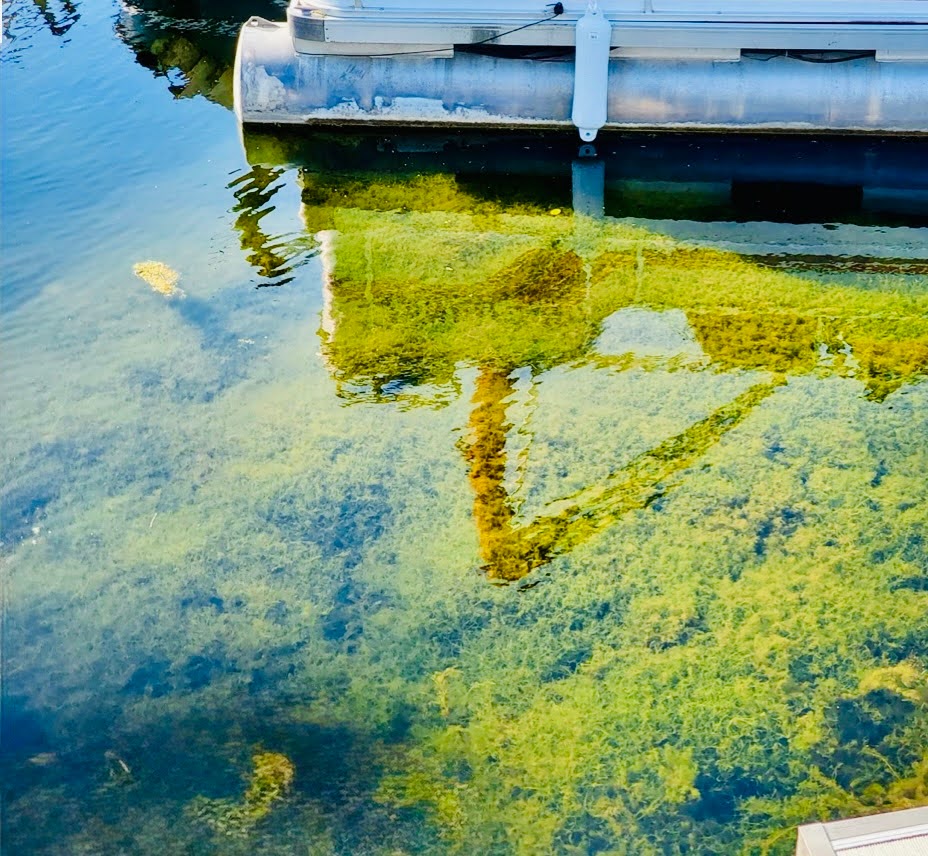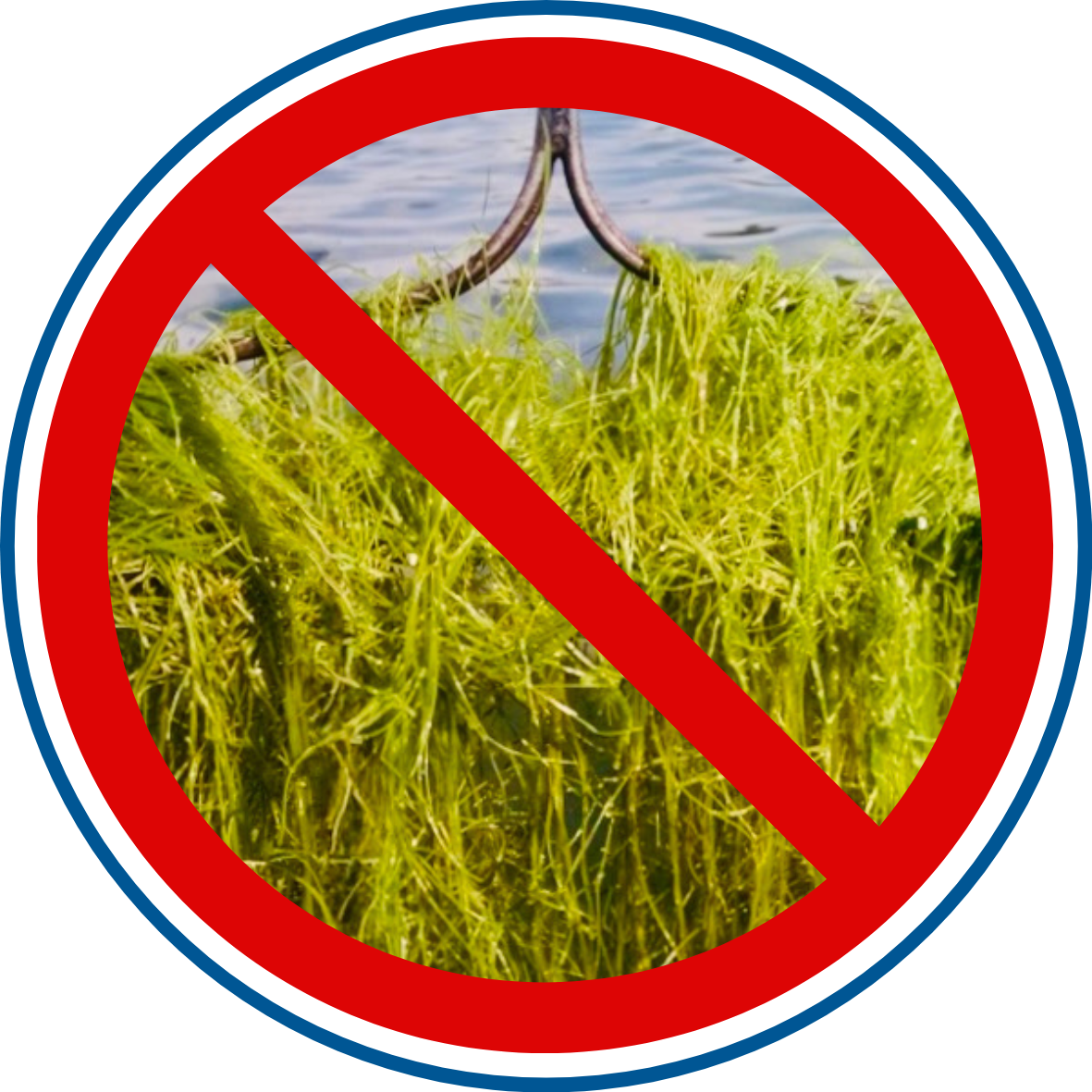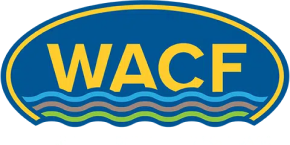Aquatic Invasives
Aquatic Species + Invasive Species = Aquatic Invasive Species
Aquatic invasive species (AIS) are non-native freshwater or marine organisms that are introduced into new aquatic environments beyond their native range. These can be plants, animals (such as fishes, crabs, mussels, or frogs), or even microorganisms.
Why Are They a Problem? AIS can severely damage native ecosystems, economies, and even human health. They outcompete native species for resources, degrade habitats, and can introduce diseases. Common examples include zebra mussels and eurasian watermilfoil.
How Do They Spread? Humans are often responsible for their spread through activities like releasing aquarium pets, discharging boat or ship ballast water, or moving recreational watercraft between different bodies of water without thorough cleaning.

Starry Stonewart Don’t rake,
avoid churning with your boat prop….
I spread!
Common Aquatic Invasives In Our Watershed
Starry Stonewort
Nitellopsis obtusa
Starry stonewort is a fast-spreading, rootless, underwater weed-like algae that looks like a normal water plant. It can grow into thick mats on the bottom of lakes, making it almost impossible to boat and fish. It is a dangerous plant that chokes out native plants and fish habitats. It easily moves from lake to lake by hitching a ride on boats, trailers and gear. No chemical has been found to kill it so treatment focuses on knocking it back every season. If you see Starry Stonewort in your lake don’t rake it, report it to the Indiana DNR.

Eurasian Watermilfoil
Myriophyllum spicatum
Eurasian watermilfoil looks delicate but quickly forms thick mats on the surface of the water that can tangle boats and swimmers. Below the surface
sunlight is blocked, killing the native underwater plants that fish and other creatures need for food and habitat. If it’s not stopped, this invasive plant will spread throughout a lake and even to other lakes. Treatment includes, herbicides, suction harvesting and rototilling to name a few.

Zebra Mussel
Dreissena polymorpha
Zebra mussels, an invasive species from Eurasia, have made their way into Indiana’s waters, including several lakes in Kosciusko County. These tiny invaders pose a big threat to our local ecosystems. They outcompete native species for food and resources, which throws the entire food web out of balance. To help stop their spread, the Indiana Department of Natural Resources (DNR) urges all boaters to remember three simple steps: clean, drain, and dry your boats every time you leave the water.

What can be done to control aquatic invasives?
Think of invasive species as unwanted travelers that can sneak into new waterways by catching a RIDE on your boats, trailers, fishing gear, and live bait. They can even catch a ride on humans!
Prevention:
- Carefully inspect your boat, trailer, and all fishing equipment. Look for any plants, animals, or mud stuck on them and remove and throw them away on land.
- Never dump leftover bait or the plant material it comes in into the water. Tiny invasive organisms can be stowaways.
- Drain all water from your boat, live wells, and any other equipment.
- Make sure everything is completely dry before you go to a different lake or river.
Taking these easy steps helps stop these “hitchhikers” and helps keep our lakes healthy..
Early Detection and Identification:
- Report suspected invasive species to
- Use the EDDMapS app to report
- Aquatic Weed Control
- Kosciusko Water & Woodland Invasive Partnership (KWWIP)
These resources can help with timely identification and management efforts.

Never pull without identification!
If you pull or rake some aquatic plant species, especially Starry Stonewort, you’ll only make them grow back even faster and more extensively.
If you are not sure about your identification skills, bring in an expert to help.
How To Manage Aquatic Weed Control:
- Chemical: Herbicides can control weeds, but follow label instructions and local rules.
- Mechanical: Harvesters/cutters remove floating weeds and surface growth.
- Physical: Hand pulling or mowing works for some weeds, requiring root removal and potential follow-up.
Funding:
Whether you love boating, fishing, or just enjoying the lake, invasive weeds like Eurasian Watermilfoil and Starry Stonewort are a problem. They can take over native plants, ruin fish habitats and make it harder to enjoy the lake, even impacting property values. Aquatic weed control, especially for invasive species, can be expensive, with Indiana spending an estimated $1 million annually on Eurasian Watermilfoil control alone.
WACF works to control these weeds in Lake Wawasee and Syracuse Lakes each year, often with assistance from state and federal grants. However, this funding is decreasing drastically. To keep treating high-traffic areas, the Wawasee Property Owners Association (WPOA) and Syracuse Lake Association (SLA) donations help. WPOA members pay $100 a year, with $25 going directly to weed control.
To manage weeds responsibly, WACF follows DNR rules that limit the treated areas to reduce chemical use.
https://www.in.gov/dnr/fish-and-wildlife/files/fw-Aquatic_Vegetation_Control_Laws.pdf
Homeowners can also treat small areas (up to 625 sq ft) along their shoreline without a permit.
https://www.in.gov/dnr/fish-and-wildlife/files/fw-Aquatic_Vegetation_Control_Permit_Infographic.pdf

